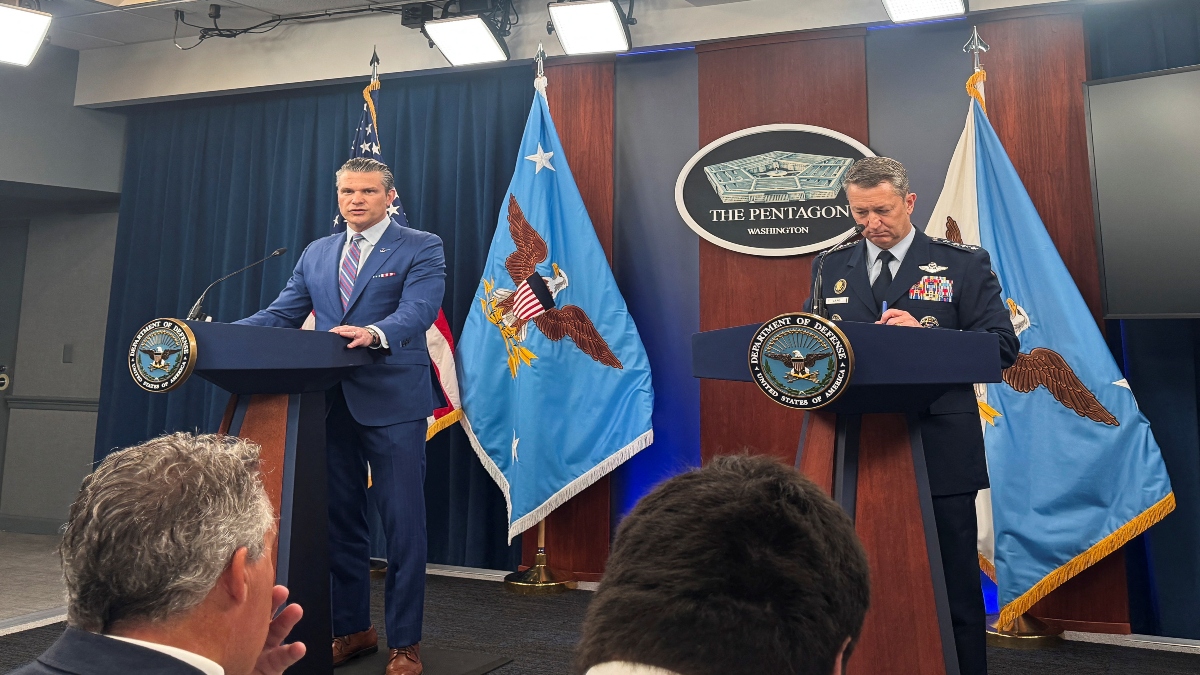Amid rising speculation over whether Iran moved its highly enriched uranium stockpiles ahead of last weekend’s US airstrikes, both President Donald Trump and the Pentagon on Thursday asserted that there is no intelligence to support such claims, maintaining that “nothing was taken out” of Iran’s nuclear facilities.
“The cars and small trucks at the site were those of concrete workers trying to cover up the top of the shafts. Nothing was taken out of facility. Would take too long, too dangerous, and very heavy and hard to move,” Trump wrote on Truth Social on Thursday morning.
The president’s statement came just minutes after Defense Secretary Pete Hegseth concluded a news conference at the Pentagon, where he echoed a similar message.
“I’m not aware of any intelligence that I’ve reviewed that says things were not where they were supposed to be, moved or otherwise,” Hegseth said in an often fiery news conference.
Over the weekend, US military bombers launched strikes on three Iranian nuclear facilities, deploying more than a dozen 30,000-pound bunker-buster bombs.
The impact of the operation is under close scrutiny, as officials and analysts assess the extent to which Iran’s nuclear programme may have been delayed or disrupted.
Several nuclear experts warned this week that Iran likely relocated a stockpile of near weapons-grade enriched uranium from the Fordow facility ahead of the US airstrikes early Sunday morning.
They suggested the material — and possibly other sensitive nuclear components — may now be hidden at undisclosed sites unknown to Israel, the US, and international nuclear inspectors.
Impact Shorts
More ShortsSatellite imagery from Maxar Technologies showed “unusual activity” at Fordow in the days leading up to the strike, including a long line of vehicles outside the facility on Thursday and Friday.
According to a Reuters report, citing a senior Iranian source, most of the 60% enriched uranium had been moved to a secret location before the attack.
The Financial Times, citing sources in European capitals, also reported that much of Iran’s enriched uranium stockpile remains intact, as it was not primarily stored at Fordow.
In response, Hegseth dismissed these claims during a Pentagon news briefing, accusing the media of understating the success of the strikes.
He pushed back against a leaked preliminary Defense Intelligence Agency (DIA) assessment suggesting the attacks may have delayed Iran’s nuclear programme by only a few months.
Calling the DIA report a “low-confidence assessment,” Hegseth pointed to newer intelligence, including remarks from CIA Director John Ratcliffe, indicating that Iran’s nuclear infrastructure had suffered severe damage and would take years to rebuild.
During the press conference, the top US general largely stuck to technical details, going into the history of the bunker-busting bombs used. General Dan Caine, the chairman of the Joint Chiefs of Staff, showed a video testing the bombs on a bunker like the ones struck on Sunday.
Caine declined to provide his own assessment of the strike and deferred to the intelligence community. He denied being under any pressure to change his assessment to present a more optimistic view of the US strikes.
He also said he would not change his assessment due to politics. Uniformed military officials are supposed to remain apolitical and provide their best military advice.
“I’ve never been pressured by the president or the secretary to do anything other than tell them exactly what I’m thinking, and that’s exactly what I’ve done,” Reuters quoted General Caine as saying.
With inputs from agencies


)

)
)
)
)
)
)
)
)



